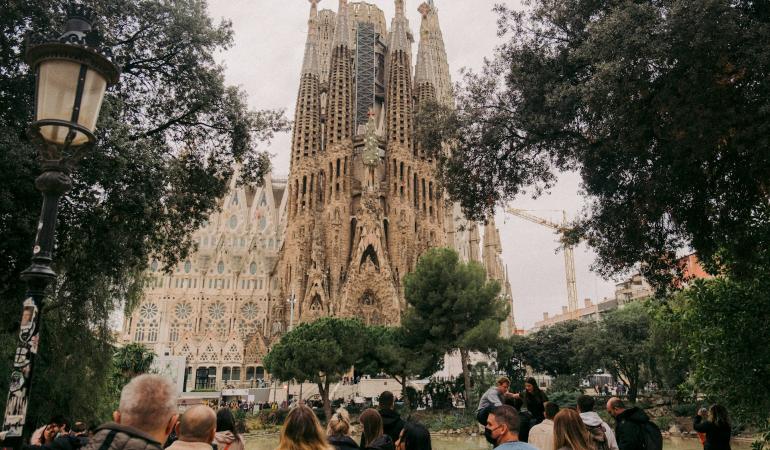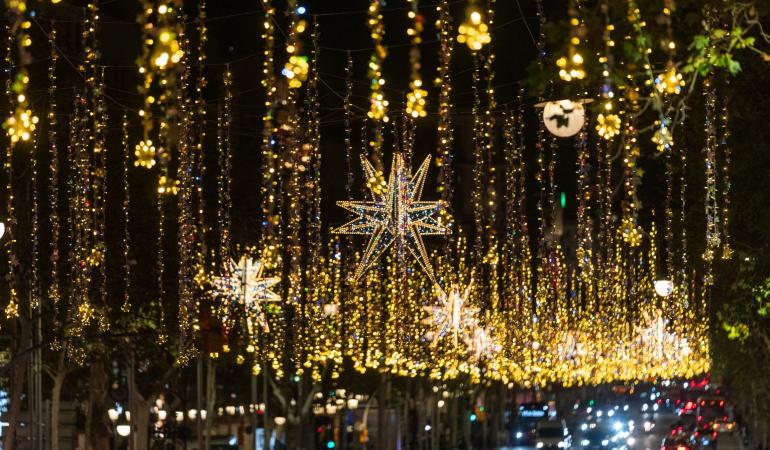If you want to relax in Barcelona and isolate yourself from the urban noise, a perfect choice is to visit the city's parks and gardens. There are plenty to choose from, but here are eight that you may not know about and which are not to be missed.

Before we delve into the vegetation of these green spaces, here are a couple of recommendations: the first is that you can get to all of them by public transport, so you may want to buy the Hola Barcelona Travel Card to get around quickly and easily.
The other piece of advice is to check the schedules to find out when these parks are open to the public, because as a result of the Covid-19 pandemic these hours may change.
- Jardins de la Tamarita (Passeig de Sant Gervasi, 47-49)
Decades ago, this space located in the northern part of the city belonged to the Craywinckel family. At the end of the 20th century, the cotton industrialist Alfredo Mata acquired it to build a mansion.
In this spot you can find fountains, ponds and marble and stone elements. What makes these gardens different from the rest, however, is a tree that is rare in Barcelona: a hundred-year-old pedunculate oak that’s 23 metres tall.
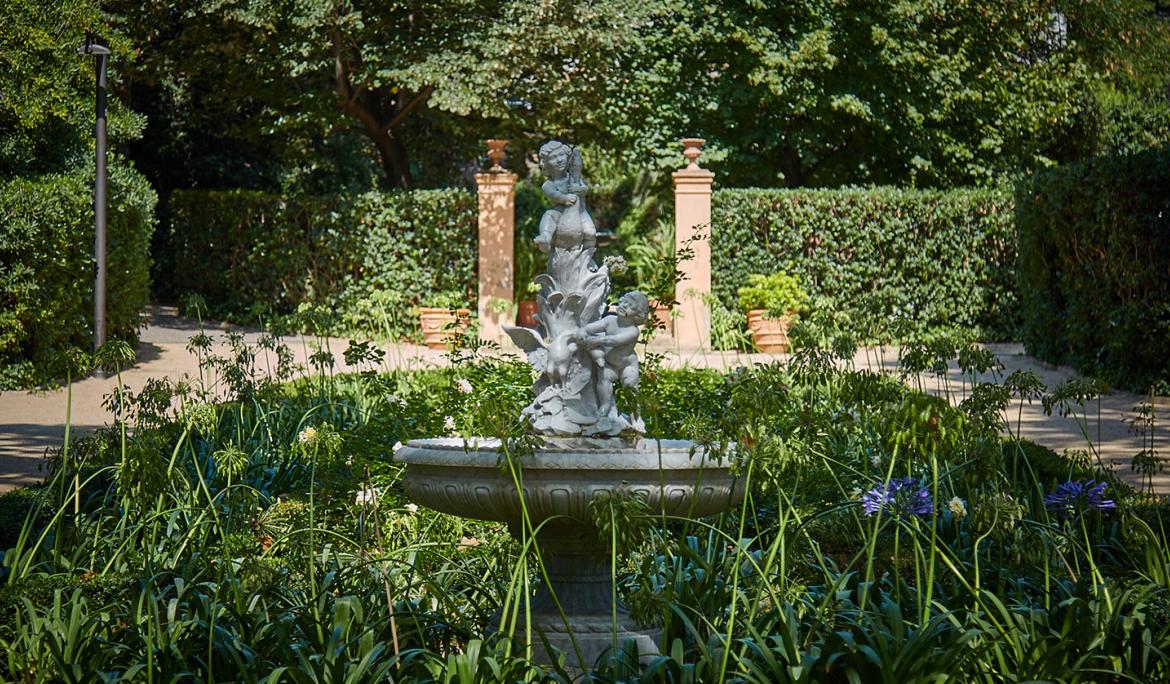
- Parc de la Guineueta (Plaça de la República, 9)
This park was built with the aim of creating a green area for a new neighbourhood that was being born in the 1950s. It connects the Verdum and La Guineueta neighbourhoods, and its name comes from the stream of La Guineu (the fox), which crossed the lands. As a tribute, the park hosts a figure of this animal.
The park is closely linked to the sardana, the traditional dance of Catalonia, thanks to the gatherings and dances of the Agrupació Sardanista l’Ideal d’en Clavé from the Roquetes district. The park is also linked with Andalusia, since Andalusian entities in Nou Barris use it for the celebrations of Las Cruces de Mayo and the Day of Andalusia.
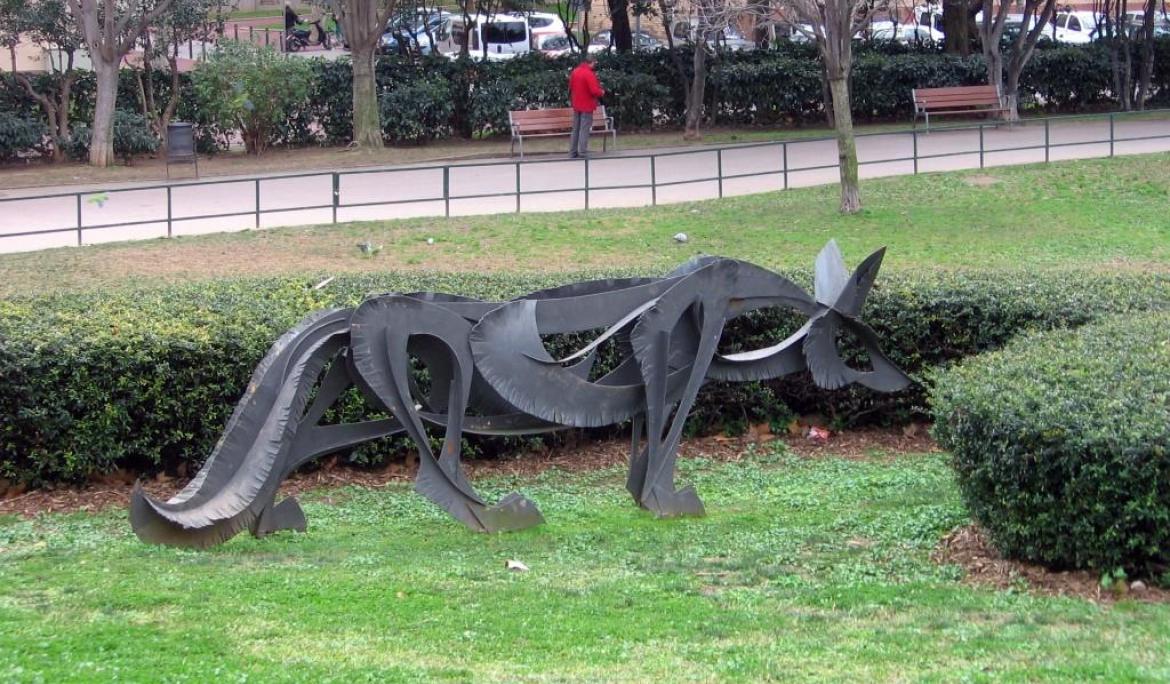
Parc del Turó del Putxet (Carrer de Manacor, 9)
A spectacular panoramic view of the city awaits you in this area that in the past was home to a pine forest, whose wood was used for fuel during the Civil War. It also housed a quarry, the walls of which are now camouflaged by conifers.
This is a park with abundant vegetation and species that are rare in Barcelona, such as the ajocagripaus, the lobelia and the seneci.
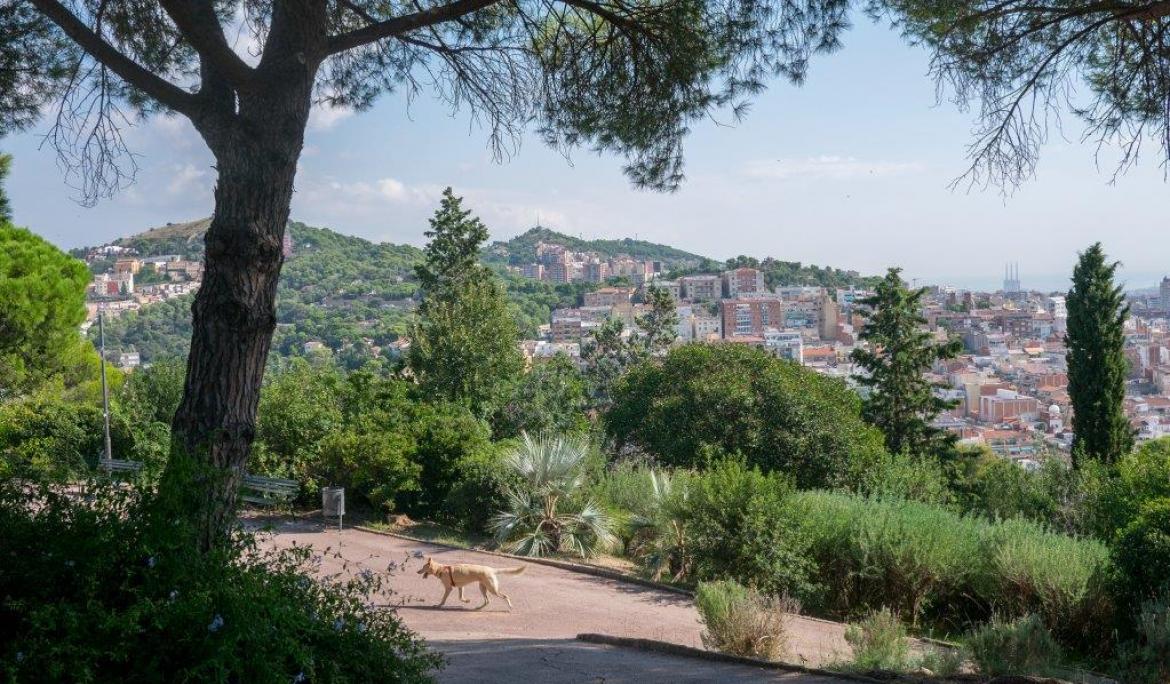
- Parc del Centre del Poblenou (Avinguda Diagonal, 130)
The prestigious French architect Jean Nouvel was responsible for the construction of this green lung in Poblenou.
When you visit it, the first thing you’ll find is the bougainvillea fence that surrounds its perimeter. Inside, over 1,000 trees and 5,000 shrubs await you, as well as 48 aromatic species which fill the park with a special scent. One of its most unique spots is the ‘crater-well of the world’, a spiral path surrounded by flowers.
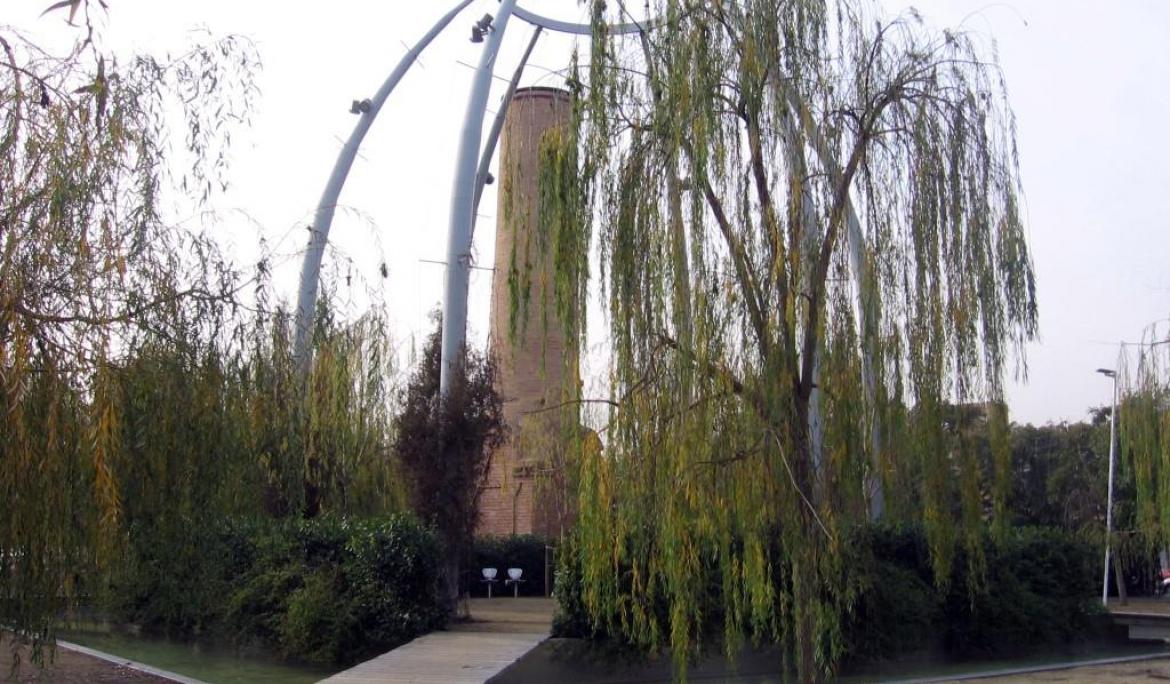
- Parc del Poblenou (Avinguda del Litoral, 59-71)
It’s located at the end of the Olympic Village and was built in 1990 on industrial land during the renovation of the coast for the 1992 Olympic Games.
The park is surrounded by bamboo fences, and inside you’ll find an esplanade which is ideal for sports and is full of aromatic spices such as thyme and rosemary. An original element of this area are the remains of a ship, the Ashraf II, which the architects found abandoned on the beach and then integrated into the park.
If after walking around you want to go to the beach, there’s no problem. The dunes of the park connect with the sand of the Mar Bella beach.
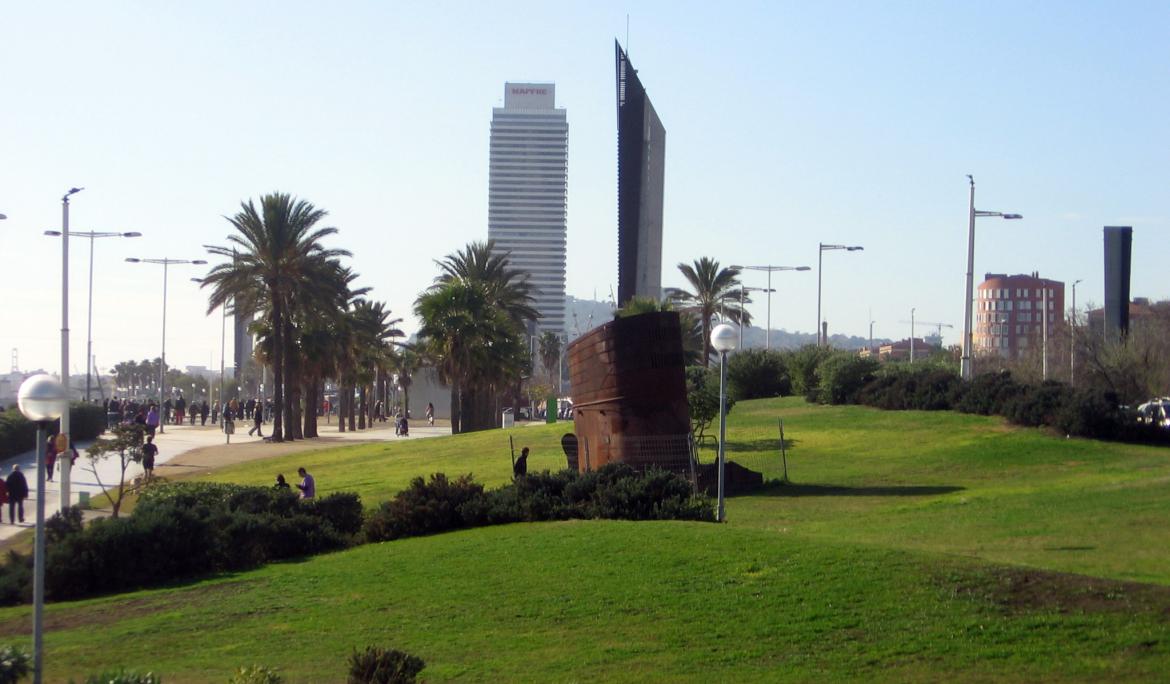
- Parc de Cervantes (Avinguda Diagonal, 706)
At the end of the Diagonal, not far from the Royal Palace of Pedralbes, you’ll find one of the great parks of Barcelona. In addition to being a space for runners and cyclists due to its large lawn areas, the park is known for its rose garden. It’s made up of no less than 10,000 roses from 2,000 species and varieties, and during flowering season, you can see about 150,000 roses in bloom at the same time.
For this reason, it’s not surprising that several rose contests have been held here throughout history. The first was held from 1929 to 1936. Another was held towards the end of the 1980s, and the International New Rose Competition has been held here since 2001. If you want to enjoy this show, check the dates of the contest and possible restrictions on the website.
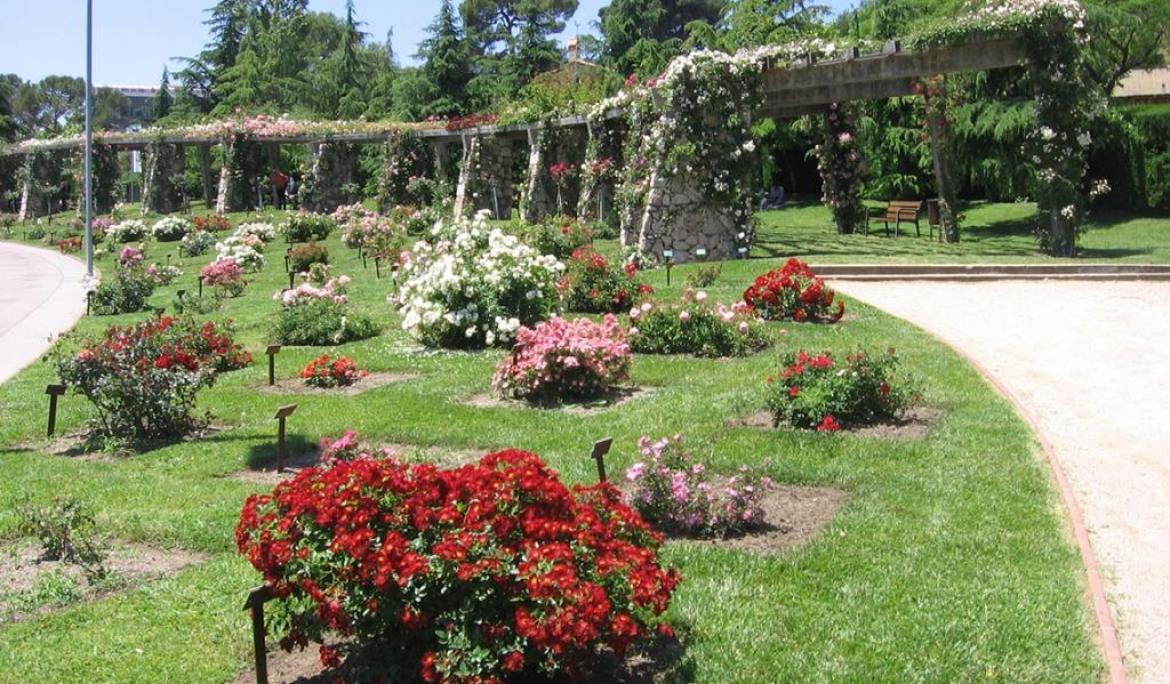
- Jardins de Laribal (Passeig de Santa Madrona, 2)
Located in the Parc de Montjuïc, it was inaugurated in 1922 and is closely linked to the Barcelona International Exposition of 1929. Francesc Cambó, curator of the Exposition, commissioned the Frenchman Jean-Claude Nicolas Forestier to build it.
It’s the first public rose garden in the city, known as the Colla de l’Arròs rose garden. Inspired by ancient Arab gardens, water plays a major role in it, including the Generalife waterfalls, which connect with the Teatre Grec.
Jardins de Laribal is also home to the Font del Gat, created in 1918, which was made famous through a popular song, and in which water flows from a cat’s head.
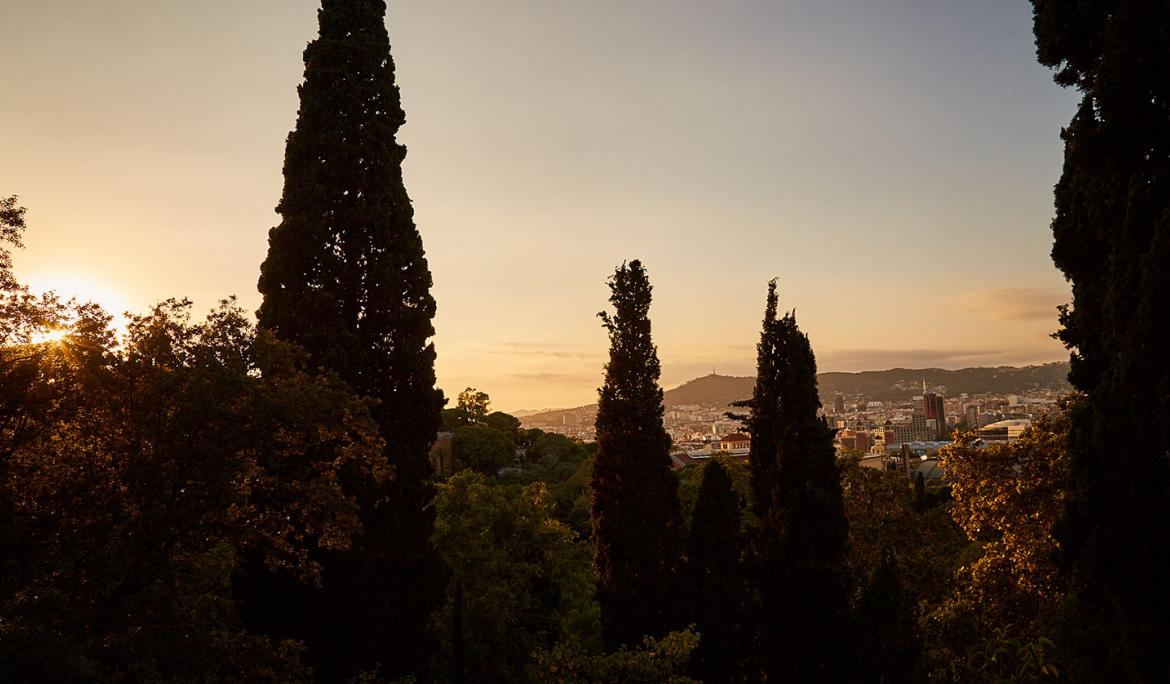
- Jardins de la Vil·la Amèlia (Carrer d’Eduardo Conde, 22)
The name of these gardens refers to Amèlia de Vilanova, the wife of the land’s owner, Ignasi Girona. In 1930 the land became public, and in 1969 the old family home was demolished.
Inside you’ll find a pond and a pine hill. In addition to these, the gardens house several trees included in the Catalogue of Trees of Local Interest of Barcelona, such as a false pepper tree of almost 90 years of age and an eucalyptus which was planted at the end of the 19th century.
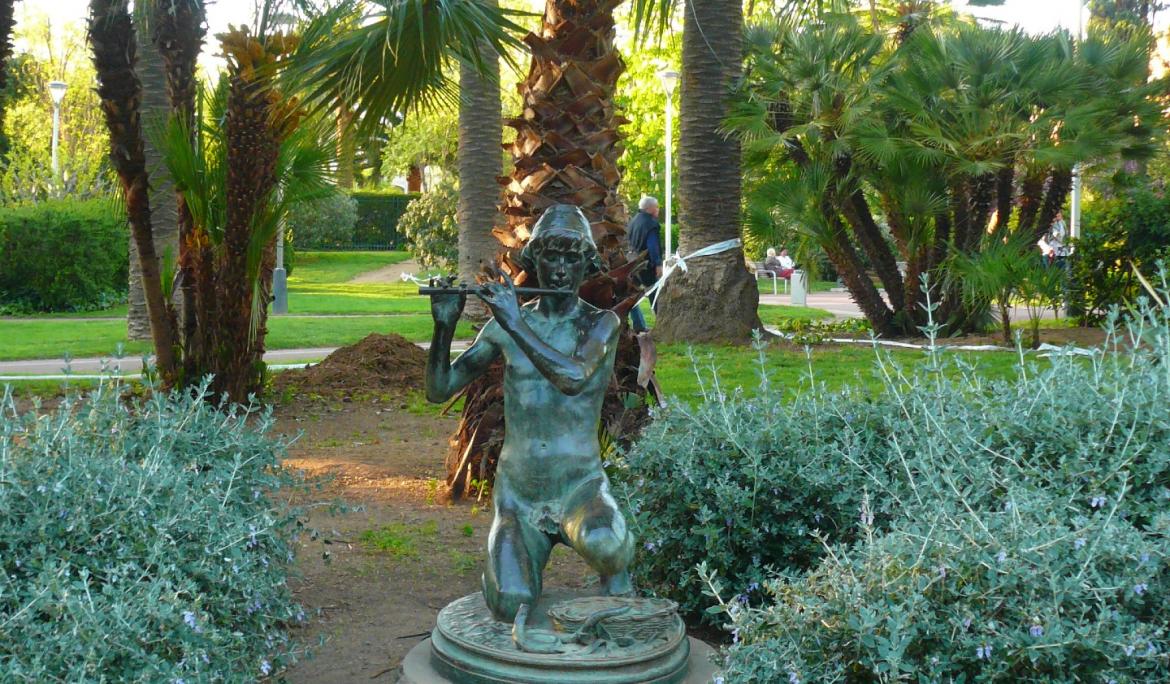
If you visit any of these parks, don’t forget to share your photos on social media with the hashtag #SayHolaBarcelona!
